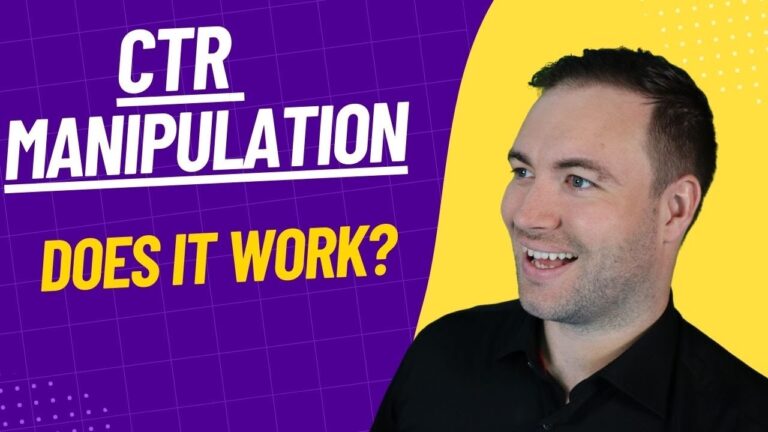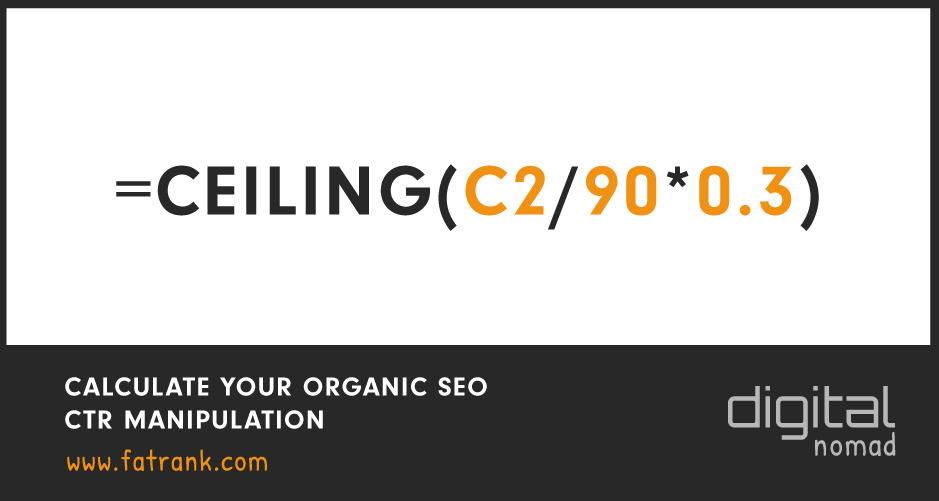LinkDaddy CTR Manipulation: Enhancing Your Online Visibility
Exactly How CTR Manipulation Can Lead to More Effective Marketing Campaign
CTR adjustment is a controversial subject in the realm of advertising, increasing ethical concerns and apprehension. Under the surface area exists a potential goldmine of data that can reinvent how we approach advertising and marketing projects. By exploring the subtleties of click-through rates, advertisers can unravel important understandings into consumer choices and actions, leading the way for impactful and hyper-targeted campaigns. This strategic adjustment of CTR metrics holds the essential to unlocking a gold mine of possibilities for advertisers seeking to raise their projects to brand-new heights of success.
Comprehending CTR Control Tactics
Delving into the world of digital advertising introduces a complex landscape where Click-Through Rate (CTR) manipulation techniques play a significant function. CTR adjustment involves strategies focused on raising the variety of clicks an online ad receives, eventually affecting its performance. One typical tactic is click scams, where automated people or bots repetitively click an ad without real passion, synthetically inflating the CTR. Marketers may additionally engage in deceptive practices like misleading or covert ad positionings to trick customers into clicking.
An additional technique involves click ranches, where individuals are paid to click advertisements, once again distorting the CTR information. Marketers might strategically place advertisements on unnecessary sites or use pop-ups to generate unexpected clicks, leading yet improving the ctr to inadequate individual experience. While high CTR can originally seem useful, it is critical for marketers to focus on top quality interaction as opposed to simply clicks. Recognizing these control techniques is vital for advertisers to make informed decisions and make sure the effectiveness and honesty of their marketing projects.

Leveraging CTR for Ad Performance
Checking out the influence of Click-Through Rate (CTR) on ad performance discloses a vital facet of digital marketing strategy. Leveraging CTR for ad performance includes understanding just how efficiently an ad is engaging its target market and driving them to take the preferred activity. A high CTR suggests that the advertisement is resonating with the target market and inspiring them to click through to the landing page, representing importance and performance. By evaluating and checking CTR data, advertisers can get beneficial insights into the performance of their ads and make notified decisions to optimize future projects.
Additionally, leveraging CTR for ad performance allows marketers to refine their targeting approaches, creative components, and messaging to improve overall campaign efficiency. Advertisers can evaluate different advertisement variations, audience sections, and targeting parameters to identify what resonates finest with their target market and drives the greatest CTR. This repetitive method based on CTR insights assists marketers continually improve their advertisement performance and achieve much better lead to regards to interaction, conversions, and roi.

Effect of CTR on Campaign Success
Recognizing the crucial role of Click-Through Rate (CTR) in electronic marketing campaign is necessary for evaluating the overall success and efficiency of marketing efforts. CTR straight influences project success by indicating the degree of interaction and interest created by an advertisement. A high CTR indicates that the advertisement is resonating with the target audience, driving traffic to the website, and possibly causing conversions. However, a low CTR suggests that the ad might not be efficiently catching the focus of viewers, resulting in wasted advertisement invest and poor campaign efficiency.
In addition, CTR influences ad positioning and cost in platforms like Google Advertisements, where advertisements with greater CTRs are usually rewarded with better advertisement positionings and reduced prices per click. This suggests that improving CTR not only improves prompt campaign efficiency but additionally enhances long-term marketing efficiency and return on financial investment. By carefully maximizing and keeping an eye on CTR throughout a project, marketing experts can make educated choices to make the most of interaction, conversions, and general project success.
Approaches to Enhance CTR Rates
Moving from the impact of CTR on project success, it becomes noticeable that carrying out effective methods to boost Click-Through Fees is vital for maximizing electronic marketing efficiency. One key technique is to create compelling ad copy that pertains to the target audience, as significance boosts the possibility of clicks. Using appealing visuals and concise, influential language can additionally record customers' focus and urge them to click the advertisement.
In addition, optimizing ad positioning is critical. Placing ads where they are more than likely to be seen, such as over the layer on a website or within relevant web content, can considerably affect CTR. A/B screening various ad placements and formats can help figure out one of the most efficient techniques for a particular campaign.
In addition, leveraging targeting options offered by advertisement systems can enhance CTR prices. Targeting specific demographics, interests, and habits makes certain that advertisements are revealed to customers who are a lot more likely to involve with them. By continually checking and analyzing CTR information, advertisers can fine-tune their strategies to boost performance and accomplish their project goals.

Making The Most Of ROI Via CTR Optimization
Enhancing Click-Through Fees (CTR) is a basic element of optimizing Roi (ROI) in digital advertising and marketing. By concentrating on CTR optimization, marketers can boost the likelihood of transforming leads right into clients, eventually boosting ROI. One effective approach for making the most of ROI through CTR optimization is to see it here develop engaging ad copy that reverberates with the target audience, triggering them to click on the advertisement. Furthermore, utilizing pertinent search phrases and targeting details demographics can enhance CTR prices, bring about a higher ROI.
Tracking and assessing CTR information is vital for optimizing projects and boosting ROI. By checking which ads have the greatest CTR and making changes accordingly, advertisers can improve their approaches to make the most of ROI. An extensive understanding of the target market's preferences and habits is important for customizing ad material that drives engagement and boosts CTR.
Verdict
To conclude, the analysis of CTR control strategies can offer useful understandings right into user behavior, resulting in a lot more reliable ad campaign (LinkDaddy CTR Manipulation). By leveraging click patterns to refine advertisement elements, advertisers can create targeted and compelling content that reverberates with their target market. Optimizing CTR find prices via tactical optimizations can dramatically impact campaign success and ultimately drive greater top quality website traffic and conversions, enhancing the total ROI of advertising initiatives
Leveraging CTR for advertisement efficiency includes comprehending just how effectively an advertisement is involving its target audience and driving them to take the preferred activity.Moreover, leveraging CTR for ad efficiency allows marketers to refine their targeting approaches, creative elements, and messaging to improve overall project efficiency. On the contrary, a low CTR shows that the advertisement may not be efficiently capturing the attention of customers, resulting in lost ad invest and bad campaign efficiency.
Additionally, CTR influences advertisement placement and price in platforms like Google Ads, where advertisements with higher CTRs are often compensated with much better ad positionings and lower prices per click. One efficient strategy for optimizing ROI with CTR optimization is to develop compelling ad copy that reverberates with the target audience, prompting right here them to click on the advertisement.